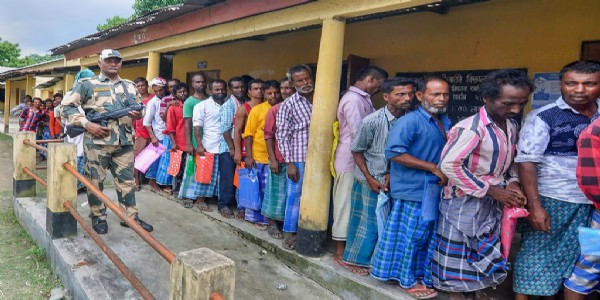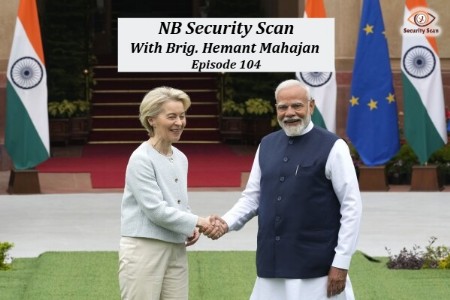#SecurityScan 15: Indian Army's 76th Infantry Day, India's Energy Security, NCR's environmental security and more
The financial security situation appears to be quite in control on inflation, currency and fiscal front. The government has proactively handled the economy through accumulation and utilization of FX reserves, inflation control and policy interventions.
Total Views | 428
This article is a summary of important events that have taken place in last one week affecting, India's national security.
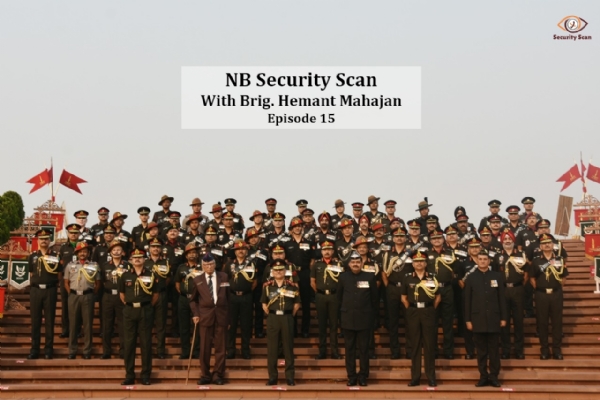
INTERNAL SECURITY
Indian Army Celebrates 76th Infantry Day
Indian Army Infantry Day is celebrated on October 27 every year to pay homage to the soldiers who fought for the country and laid down their lives in the line of duty.
The infantry is an Ultimate arm responsible for the security of the country and has suffered maximum casualties in conventional wars and Anti Terrorist operations carried out in various parts of the country. It has also won maximum number of gallantry awards and has maximum number of soldiers disabled due to grievous injuries. The nation must pay salute to this brave infantryman who are protecting the country 24 x 7.
India Needs To Increase Domestic Drone Development
India’s fourth negative arms import list has 101 products including high-altitude and long-endurance drones. Domestic production and procurement of such drones is now a necessity. From Armenia-Azerbaijan skirmishes , Turkish Bayraktar TB2 combat drones helped turn the tide for Ukrainian forces in the earlier part of the war. Ukraine is acquiring other UAV systems like the Switchblade 300 and Phoenix Ghost loitering munitions or kamikaze drones that have helped it resist Russian army. Russia deployed Iranian Shahed-136 kamikaze drones that have wreaked havoc on Ukrainian cities.
Pakistan and China are ahead of India in drone usage. Besides drone attack on the Jammu Air Force Station, Pakistan has used drones 100 times last year to pump in huge quantity of narcotics into Punjab. We haven't found adequate counter.
Usage of drones by China for surveillance ,reccee on the Indo China border is much higher than the Indian Army. We need to change this situation. The DRDO has not delivered on UAV design and operational requirements.
The army is inducting kamikaze drones under an emergency procurement contract with an Indian-Israeli private joint venture. The army wants to procure indigenous kamikaze drones and mini drones for surveillance and for aiding artillery in Ladakh.
Indian private players are now getting into drone development in a big way, which should help create an indigenous UAV ecosystem. The new drone policy is helping, but to catch up with drone technology leaders, will require considerable effort.
ECONOMIC SECURITY
Corruption in the tax department, used to be a major cause of concern for every taxpayer who suffered at the hands of dishonest tax officials. Single decision of the Modi government of faceless assessment has practically stopped corruption.
It has significantly reduced instances of harassment. Data shows that even tax compliance has increased.
In international taxation, non-residents are required to approach the department for tax clearance on the sale of property under section 195/197. The procedure remains cumbersome. This area needs to be addressed and the government should take steps to reduce the harassment of NRI taxpayers.
If the faceless tax regime for direct taxes has resulted in significant benefits, the main drawback of GST is that it remains face-to-face. While making GST proceedings faceless would be difficult, the way corruption is increasing is a cause of concern.
The faceless tax regime in the Income Tax Department has completely stopped corruption from the system but corruption in the case of indirect taxes persists with GST and should bestopped.
NCRs Environmental Security
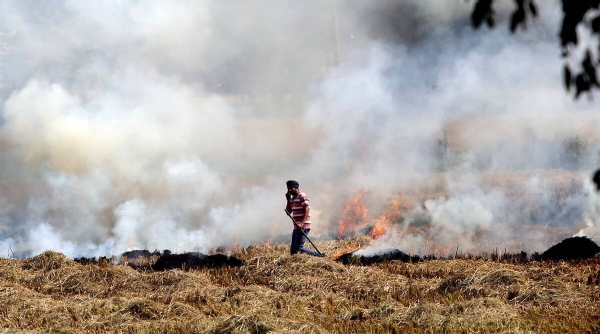
The stubble burning count in Punjab has already surpassed last years fire which means more pollution deaths.
Delhi had banned the sale and bursting of firecrackers. The unpopular decision had the backing of the Supreme Court. That did not prevent the national capital’s air quality from turning ‘very poor’ overnight as firecrackers were set off in several parts.
The season of breathing ailments has started. A fair share of the blame is pinned on the practice of stubble burning in the neighbouring states. Since AAP now holds the reins of power in Punjab along with Delhi, it can no longer play the victim card on the issue of farm fires. So far, AAP’s efforts to prevent stubble burning have failed due to farmers obstinacy.
India’s Energy Security
India's oil imports from the Middle East fell to a 19-month low in September while Russian imports rebounded.
Iraq remained the top supplier while Russia overtook Saudi Arabia as the second biggest.India's imports from the Middle East fell down 16.2% from August, while imports from Russia increased 4.6%.
Russia's share of India's oil imports surged to an all-time high of 23% from 19% the previous month while that of the Middle East declined to 56.4% from 59%.The share of oil, from Kazakhstan, Russia and Azerbaijan, rose to 28% from 24.6%.
India has emerged as Russia's second biggest oil buyer after China, taking advantage of discounted prices. The discount on Russian oil has narrowed now but when you compare its landed cost with other grades such as those from the Middle East, Russian oil turned out to be cheaper.
India has managed its energy security well with the help of discounted Russian crude and also by imposing windfall tax on the refining industry. We should continue to do it for ensuring oil price stability.
Make for World - India Entering Market As A Transporter Of LEO Telecom Satellites
The Indian Space Research Organisation's launch on Sunday of its heaviest rocket in use, the Geosynchronous Satellite Launch Vehicle Mark 3 (GSLV Mk 3), or LVM3, with a payload of 36 satellites should help it tap into a rapidly growing demand for commercial satellite launches. The payload delivered for One Web, which intends to offer global telecommunications connectivity by next year with a constellation of 648 satellites, is the first of two batches contracted out to Isro's commercial satellite arm, New Space India Ltd.
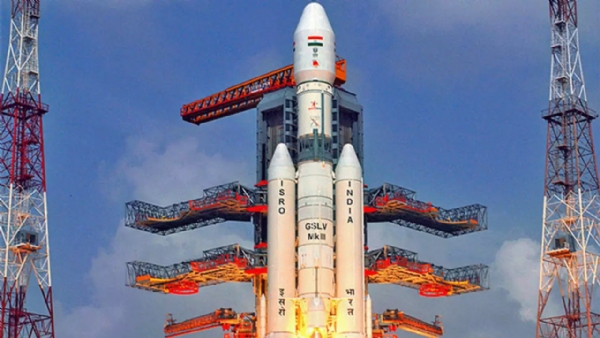
ISRO is speeding up production of the launcher in anticipation of a swelling order book once its capability in delivering satellite clusters is tested.
India is entering the market as a transporter of LEO telecom satellites as it begins to roll out 5G cellular services gateway for a jump in economic productivity. High-speed, low-latency communications delivered through satellites are emerging as an additional layer in 5G networks that require fibre-based backhaul. The integration of satellite networks with terrestrial ones is expected to acquire sufficient redundancy to be able to offer global 5G coverage.
The two sets of launches has established Isro's credentials at a time launch vehicles by Russia, France and China are out of contention because of Ukraine war or delayed development and inadequate acceptability. The shortage of launchers coincides with rising demand for placing commercial satellites, particularly in low-Earth orbit (LEO) for telecom. Indian space services could draw business worth $13 billion by 2025, with satellite launches being the fastest-growing segment. As one of the world's biggest markets for telecommunications, India should not miss the opportunity of setting up its satellite network infrastructure which will tremendously improve economic productivity.
EXTERNAL SECURITY
Breaking The Monopoly Of State-Run Hindustan Aeronautics Ltd For Building Aircrafts
A new aviation complex to manufacture military transport aircraft will be built in Gujarat.
The new plant will manufacture C-295 transport aircraft that are on order by the Indian Air Force under a ₹21,935 crore deal inked in 2021. The plant at Vadodara will be set up by a Tata consortium, which has partnered Airbus Defence and Space for the project to supply 56 aircraft.

The facility will manufacture 40 aircraft, while the initial 16 will be built in Spain. The plant will have the capacity to make eight aircraft annually and is likely to get further orders from the armed forces as well as overseas. The Vadodara facility will be India's first private sector aviation manufacturing complex, breaking the monopoly of state-run Hindustan Aeronautics Ltd, the country's sole aircraft producer thus far.
This is another step forward in make in India initiative and spur competition between private manufacturers and Hindustan Aeronautics Limited.
Boost to submarine arm
After last week's test of a nuclear-capable ballistic missile from nuclear-powered submarine INS Arihant, India's underwater combat arm is set to get another major boost with the induction of another nuclear and two diesel-electric conventional submarines.
INS Sindhuratna, is slated to return to Mumbai after undergoing a protracted "medium refit-cum-life extension" upgrade in Russia in February. INS Sindhuratna is the second of the four old Russian Kilo-class submarines earmarked to undergo the modernisation upgrade, each costing around Rs 1,400 crore.
The Navy will also commission the fifth of the six new French-origin Kalvari-class Scorpene submarines being built at Mazagon. With advanced stealth features, the Scorpenes are equipped with both long-range guided torpedoes, anti-ship missiles and advanced sonars sensor suites.
On the SSBN front (nuclear-propelled submarines armed with nuclear-tipped ballistic missiles), the 6,000-tonne INS Arighat is also slated to be commissioned within the next few months.
As of now, India has just one operational SSBN in INS Arihant, armed only with short-range 750-km B-O5 or K-15 missiles. In the conventional fleet, apart from the four new Scorpenes, there are just six old Russian Kilo-class and four German HDW submarines.
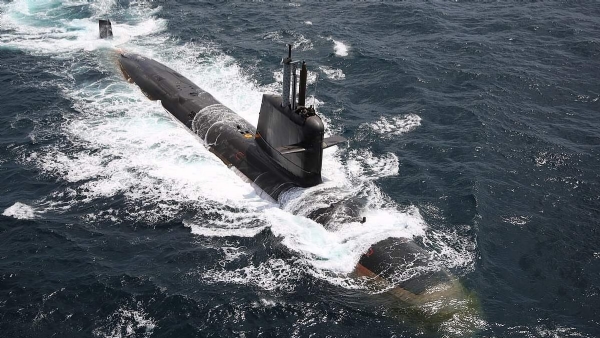
China already fields 50 diesel-electric and 10 nuclear submarines. It is also set to soon begin supplying eight Yuan-class diesel-electric submarines with air-independent propulsion (AIP) for greater underwater endurance to Pakistan.
In contrast, India's long-pending over Rs 42,000 crore project to construct six new-generation conventional submarines with foreign collaboration will take almost a decade from now for the first submarine to roll out. The projected requirement to deal with the collusive China-Pakistan threat in the maritime domain is at least 18 conventional submarines, four SSBNs and six nuclear-powered attack submarines .The deficiency has to be made up.
COUNTERING CHINA PAKISTAN HYBRID WAR
Rishi Sunak’s India Test
Rishi Sunak’s election as the Prime Minister of the UK by Conservative Party is a big moment for the Indian diaspora. His achievement has struck a deep chord in India too is because of the close ties India has with its diaspora across the globe .Three crore Indians have left India in the pursuit of better prospects. He has become the youngest UK PM in two centuries.
His priority is combatting recession, record inflation, and a rising tide of unpopularity for his party. His job is very tough.
The Indians do very well in Europe USA and the western countries because of the environment prevailing there, hard work and meritocracy. Can these conditions be recreated in India, so that We become world power faster?
Important for India is India-UK FTA.FTA will help us to improve our economy. Sunak is “strongly committed” to the deal. FTA makes sense for India only if the UK’s skills shortage is met by India’s skills supply. Hope FTA is signed soon.
Security of Hindus and Sikhs in UK because of jihadi and Khalistani elements is also a cause of concern and should be taken care on priority.
Sunak Is known for his strong views on stopping Chinese infiltration into various segments of British society. We must make full use of it to build alliance against the Chinese.
China Xi’s Unparalleled Authority: Danger To Democtatic World
The 20th Congress of the Communist Party of China has largely reaffirmed the direction in which China will head.The confirmation of the long-expected third term for Xi Jinping as CCP general secretary has underscored his unparalleled authority within the party-state system. Personnel appointments starting with the changes in the politburo and its standing committee to the appointments to the Discipline Inspection Commission also underline the extent of Xi’s authority.
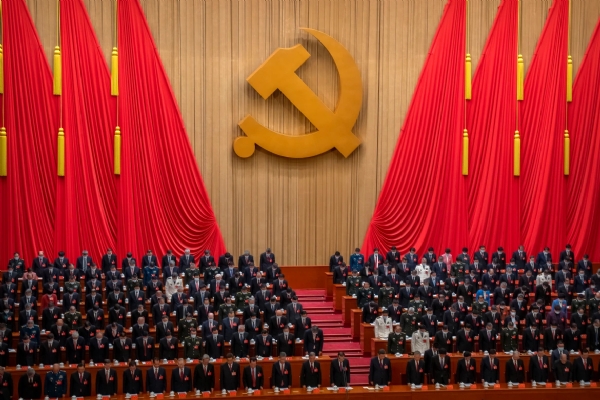
$6 trillion stock-market rout was worlds response to President Xi Jinping securing a third term.
But there are big gains for India from Xi take over. China-West tensions are boosting India's manufacturing industry. India as a risk-mitigation tactic a hedge against manufacturing all goods in China — is a story that’s gathering investor interest all over world. The premium for Indian stocks over emerging-market shares is currently rising.
Indian Military Exercises With QUAD, AUKUS, ASEAN Countries For Countering China
India has lined up number of combat exercises to further bolster military interoperability .This includes the Malabar quadrilateral naval wargames off Japan, infantry exercises with Australia and three Asean countries, and high-altitude warfare exercise with the US near the LAC with China.
Warships, submarines, fighters, aircraft and helicopters will be deployed by India, the US, Japan and Australia off Yokosuka in Japan from November 8 to 18 for Ex Malabar.India is dispatching multi-role stealth frigate INS Shivalik, anti-submarine corvette INS Kamorta and a P-8I long-range maritime patrol aircraft for the Malabar exercise, which will be preceded by Japan’s international fleet review.
INS Vela completed an extremely successful mission-based deployment across the Indian Ocean Region , which included extensive patrolling in the Bay of Bengal.
The sustained deployment and exercises were in view of the increasing Chinese naval presence in the IOR. The Quad and AUKUS, the trilateral pact among the US, UK and Australia is to help Canberra acquire nuclear submarines, These are important components of policy to counter China’s expanding footprint in the Indo-Pacific.
The battalion-level `Yudh Abhyas' exercise between the Indian and US armies will be held at Auli in Uttarakhand, 100 km from the LAC with China, from November 15 to December 2. Special Forces of the two countries conducted the `Vajra Prahar’ exercise at Bakloh in Himachal Pradesh in August.
Yudh Abhyas will witness employment of integrated battle groups in mountains and extreme cold climate, along with heliborne elements and an integrated surveillance grid.
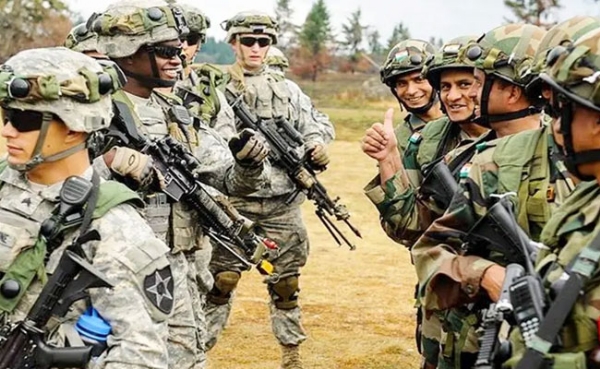
India is participating in Australia in the recent `Pitch Black’ air combat exercise at Darwin, their armies will now also conduct the first-ever `Austra-Hind’ infantry combat exercise at the Mahajan field firing ranges in Rajasthan from November 28 to December 11.
India kicked off the SIMBEX naval exercise with Singapore in the Bay of Bengal, while their armies will conduct the `Agni Warrior' exercise at Deolali from November 13 to November 30. The Indian Army will also undertake the `Harimau Shakti' exercise in Malaysia from November 28 to December 13 and the `Garud Shakti’ in Indonesia from November 30 to December 15.
All such exercises build strategic cooperation and military interoperability with like-minded countries, with the armed forces also getting the opportunity to improve combat skills and operational tactics.
The new national security strategy of the US has said that China was its only competitor with both the “intent and capability” to reshape the international order.
The US and India will work together, and multilaterally, to support our shared vision of a free and open Indo-Pacific. The new national security strategy of the US has said that China was its only competitor with both the “intent and capability” to reshape the world.
Ukraine war-Stop Using Nuclear Weapons For Sabre-Rattling
Russia is spreading its story about a Ukrainian ‘dirty bomb’ – India got the call on Wednesday – is being interpreted by the West as a Moscow disinformation exercise aimed at fabricating an excuse to use tactical nukes. Adding to those suspicions is Russia conducting an exercise of its strategic nuclear forces.
Russia’s attempt to talk up a dirty bomb threat from Ukraine has prompted defence minister Rajnath Singh to warn that neither side should use the nuclear option. Worries have grown over Russia using a tactical nuclear weapon against Ukraine by blaming it first use through a false flag operation. Russian president Vladimir Putin has been itching to punish Ukraine for its recent successes.
It needs to be made clear to him by all world nations, that nuclear weapons are a red line that no one must cross. India has considerable leverage over Russia. Efforts to end the war must intensify and Putin could be offered the carrot of withdrawal of sanctions.
India’s Economy's Productivity Is Improving
India’s economy's productivity is improving. Last week as a part of the of the annual World Bank Fall Meetings 2022, some of the global policymakers, think-tanks, and some very significant investors talked about state of world economy including Indian economy. Their assessment of India's economy and growth in future are given in the succeeding paragraphs.
India has shifted to enhancing economy's productivity. Traditionally, India was known as low productivity economy. In the recent years, India has used digitisation to increase productivity significantly.
Almost 10% of the total retail commerce has moved to ecommerce in less than a decade. Use of artificial intelligence is expected to improve agriculture yield by at least 15% .In the logistics sector, logistics costs will be reduced by half by using various technology interventions. Telemedicine and consultation have improved the efficiency of the healthcare system.
Digitisation in manufacturing has led to reduction in machine downtime by 30% and improvement in labour productivity by 15%. India’s resolve towards fiscal discipline, inflation management is exemplary. Average inflation is just 4.8%.
With global corporates wanting to shift 20 to 30% of their manufacturing out of China, India is good alternate destination. Plenty of public and private capital is available Indian industry. The startup ecosystem has started making its contribution to the economy. 76,000 startups have created almost a million direct jobs and manifold indirect jobs. They have brought efficiency in several sectors, made ease of doing business possible and finally created shareholders value and attracted global capital.
The situation appears to be quite in control on inflation, currency and fiscal front. The government has proactively handled the economy through accumulation and utilisation of FX reserves, inflation control and policy interventions.
--
Bharati Web
Mes, Pune




